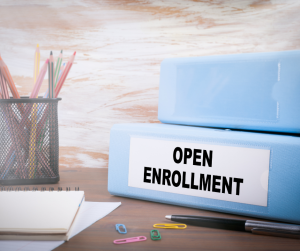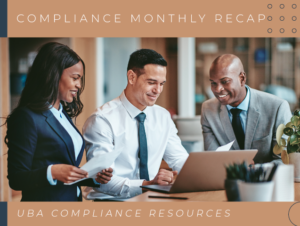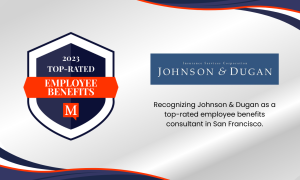The IRS has announced a reduction in the Affordable Care Act (ACA) affordability percentage for plan years starting in 2024, lowering it from 9.12% in 2023 to 8.39%. This affordability percentage determines the maximum portion of an employee’s household income that can be spent on self-only coverage while still complying with the ACA’s affordability requirement. For applicable large employers (ALEs) with 50 or more full-time or full-time equivalent employees, this change means they must offer at least one health plan that does not exceed 8.39% of an employee’s household income for self-only coverage starting in 2024. This could necessitate adjustments to both employer and employee contributions to meet the new affordability standard. Employers have three safe harbors to determine if their health coverage is affordable under the ACA: Federal Poverty Level, Rate of Pay, or W-2 Wages. These safe harbors provide different methods for assessing affordability based on employees’ income, and employers can choose the one that best suits their situation. Non-compliance with ACA affordability requirements may lead to penalties for ALEs. Penalty A applies if an employer fails to offer minimum essential coverage to at least 95% of its full-time employees, while Penalty B applies when affordable, minimum value coverage is not offered to all full-time employees, and at least one employee receives a subsidy when enrolling in Marketplace coverage. The penalties for 2024 have been set, with Penalty A at $247.50 per month and Penalty B at $371.67 per month.
EMPLOYER CONSIDERATIONS
Employers should proactively work with their health plan broker or consultant to adapt to these changes in the 2024 ACA affordability percentage and avoid potential penalties while ensuring their employees have access to affordable health coverage.
UPDATED CHIP MODEL NOTICE RELEASED
The Department of Labor (DOL) has recently issued an updated model Employer CHIP Notice, through its Employee Benefits Security Administration (EBSA). This notice serves as a reminder of the annual notice requirement set forth by the Children’s Health Insurance Program Reauthorization Act of 2009 (CHIPRA). Employers who maintain group health plans in states offering premium assistance subsidies under Medicaid or Children’s Health Insurance Plans (CHIP) are obligated to provide this notice. Employers have the flexibility to deliver this notice independently or in conjunction with other materials, such as those related to health plan eligibility, open enrollment processes, or the summary plan description (SPD). The annual notice requirement applies to employers whose group health plans cover participants residing in states with premium assistance subsidies, regardless of the employer’s location. The DOL’s model notice, which employers can use for compliance, is periodically updated to align with changes in states offering premium assistance subsidies.
EMPLOYER CONSIDERATIONS
While employers have the option to create their own notices or customize the model notice, it is crucial to ensure that any notice provided includes at least the minimum state-specific contact information relevant to employees residing in states with premium assistance programs. Compliance with this requirement is essential for employers to inform their employees about the availability of these subsidies under CHIPRA.
PREPARING FOR MEDICAL LOSS RATIO REBATES
Employers with fully insured group health plans may receive a check from their insurance provider, known as a medical loss ratio (MLR) rebate. These rebates are aimed to ensure that a significant portion of the premiums paid by plan participants goes toward covering healthcare expenses and quality improvements, rather than the insurer’s administrative costs and profits. These rebates must be distributed by insurers annually, typically by September 30.
YOU CAN PREPARE NOW
While the checks are still forthcoming, employers can prepare now for the actions they will need to consider. The way employers can use the MLR rebate depends on how health coverage premiums are paid. If the employer covers 100% of the premiums for employees and their dependents, any rebate belongs to the employer to use as the employer sees fit. However, if participants contribute to the premiums, a portion of the rebate is considered “plan assets,” which must be used exclusively for the benefit of plan participants. Calculating the plan asset portion of the MLR rebate involves determining the percentage of total plan premiums assigned to employee contributions. This can be challenging, especially when employers offer various premium payment strategies. Nevertheless, it is crucial to accurately calculate and allocate the plan asset portion to remain compliant with regulations. Employers have a couple of options for using rebates considered plan assets: they can improve plan benefits or return the appropriate amount to plan participants. Improving benefits can be tricky due to the rebate’s often modest amount and uncertainty about future rebates. The more popular option is returning the rebate to participants, either as a cash payment or a temporary reduction in premium contributions. Tax considerations come into play depending on whether contributions were made on a pre-tax or after-tax basis. ERISA regulations require timely distribution of employee portions of the MLR rebate, typically within 90 days of receiving the rebate from the insurer. Decisions on how to allocate these rebates among participants are subject to fiduciary standards, ensuring that participants’ interests are served fairly and impartially. DOL guidance generally advises against distributing rebates to former plan participants due to administrative costs outweighing the rebate’s value.
EMPLOYER CONSIDERATIONS
Employers are not required to provide a specific notice about the MLR rebate to employees; instead, insurers are responsible for notifying plan participants. Employers may choose to communicate with participants to manage expectations regarding rebate amounts, as these are often relatively small on a per-participant basis. This communication can help avoid potential misunderstandings among employees.
PRESIDENT BIDEN ESTABLISHES OVERDOSE AWARENESS WEEK
A Proclamation released by President Biden addressed the nationwide crisis of drug overdose and barriers to treatment. The declaration addresses the impact untreated addiction has on millions of Americans, creating an urgent need for decisive action to combat the epidemic. “My Administration has worked hard to ensure that substance use disorder is treated like any other disease, funding the expansion of prevention, treatment, harm reduction, and recovery support services.” – President Biden The administration has implemented a National Drug Control Strategy targeting recovery support, along with making it easier for doctors to prescribe effective treatments, providing critical assistance to millions of Americans.
SICK LEAVE EXPANDS IN COLORADO
Colorado recently expanded the rights of employees to take paid time off. This expands the Colorado Healthy Families and Workplace Act (HFWA), which was originally created during the COVID-19 pandemic to ensure all employees in the state have access to paid sick leave, regardless of their job or employer size. Previously, the HFWA permitted employees to use paid sick leave for:
- The employee’s inability to work due to a mental or physical illness, injury, or health condition.
- The employee’s need to obtain preventive medical care or medical diagnosis, care, or treatment.
- The employee’s needs due to domestic abuse, sexual assault, or criminal harassment, including medical attention, mental health care or other counseling, legal or other victim services, or relocation.
- To care for a family member who needs the sort of care listed above.
- The employee’s need for leave during a public health emergency when a public official closed the employee’s workplace or the school or place of care of the employee’s child.
Effective Aug. 7, 2023, Colorado employees may take paid leave for the following additional uses:
- Bereavement or to handle the financial and legal needs arising after a death of a family member.
- When an employee must evacuate their residence or care for a family member whose school or place of care was closed due to inclement weather, power/heat/water loss, or other unexpected event.
The HFWA requires that paid sick leave accrues over time, with at least one hour earned for every 30 hours worked, up to a minimum of 48 hours per year. Any unused hours can carry over to the next year. Employees must be paid their regular hourly rate when they take sick leave, and employers can ask for documentation only if an employee is absent for four or more consecutive workdays.
EMPLOYER CONSIDERATIONS
Employers must update their policies to include these new reasons for paid sick leave and inform their employees about their rights. Failure to do so may result in fines or liability for unpaid wages.
LEAVE LAWS EXPANDED IN ILLINOIS
The Illinois Victims’ Economic Security and Safety Act (VESSA) has recently undergone significant amendments aimed at expanding the leave provisions available to employees dealing with the aftermath of a family member’s death resulting from a crime of violence. VESSA is applicable to all employers in Illinois and mandates that they provide unpaid leave to employees who are victims of domestic, sexual, or gender violence, as well as those affected by crimes of violence, including their family or household members. Prior to these changes, VESSA allowed employees to take leave for various reasons related to violence, such as seeking medical attention, counseling, victim services, legal assistance, and safety planning. The new amendments to VESSA introduce three additional reasons for leave. Employees can now take time off to:
- Attend the funeral or alternative service of a family or household member who was killed in a crime of violence.
- Make necessary arrangements following the death.
- Grieve the loss of a loved one due to a violent crime.
To substantiate their need for leave, employees can provide documentation such as a death certificate, obituary, or written verification from relevant authorities. The amount of VESSA leave an employee is entitled to varies based on the size of the employer. For the new, amended purposes related to deaths involving crimes of violence, employees are entitled to two workweeks (10 workdays) of unpaid leave, to be taken within 60 days after receiving notice of the victim’s death. This additional leave does not affect an employee’s entitlement to other qualifying VESSA leave during the same 12-month period.
EMPLOYER CONSIDERATIONS
VESSA overlaps with the Illinois Family Bereavement Leave Act (FBLA), which provides bereavement leave for eligible employees following the death of a covered family member. However, VESSA covers all Illinois employees, while FBLA is limited to those eligible for federal Family and Medical Leave Act (FMLA) leave.
QUESTION OF THE MONTH
Q: We have a group in Canada with both U.S. and Canadian employees. For COBRA eligibility purposes, do we count the Canadian employees with the U.S. employees? A: Yes, you must count the foreign employees with the U.S. employees of the same company for purposes of determining whether the employer is subject to COBRA.
| ©2023 United Benefit Advisors This information is general in nature and provided for educational purposes only. It is not intended to provide legal advice. You should not act on this information without consulting legal counsel or other knowledgeable advisors. | |
| About UBA United Benefit Advisors® (UBA) is the nation’s leading independent employee benefits advisory organization with more than 200 offices throughout the United States, Canada, and Europe. UBA empowers 2,000+ advisors to maintain independence while capitalizing on each other’s shared knowledge and market presence to provide best-in-class services and solutions.The content contained in this website, including but not limited to all text, images, trademarks, and logos, is owned by United Benefit Advisors® (UBA) except as otherwise expressly stated or provided by third parties. UBA Partner Firms must keep all copyright, trademark, and copy intact. All others may link directly to the UBA website to share UBA copyrighted material; they may not duplicate, distribute, create derivative works, or otherwise use this site’s content. |





